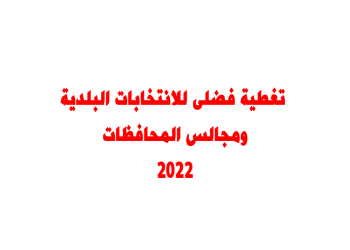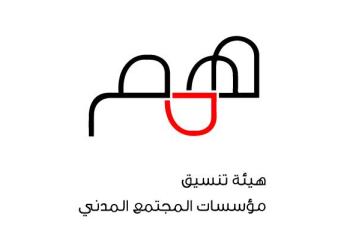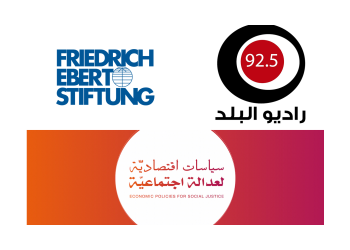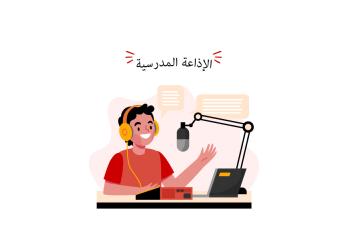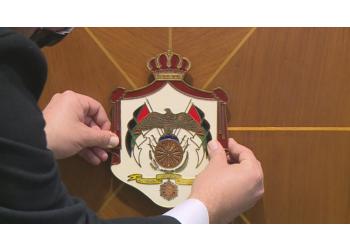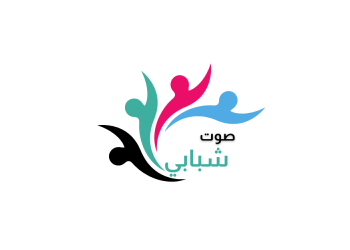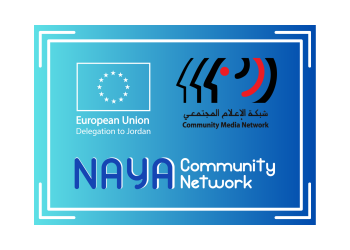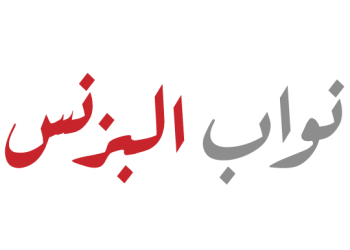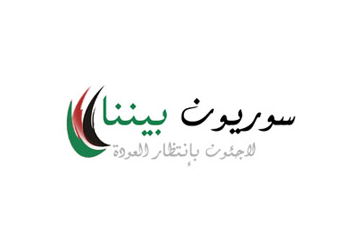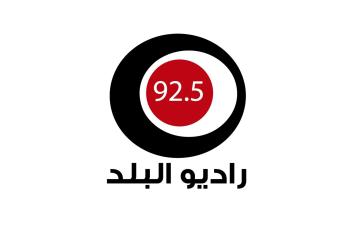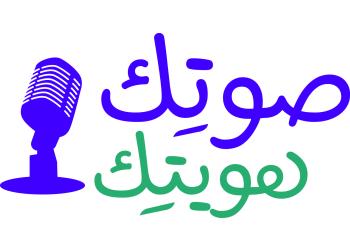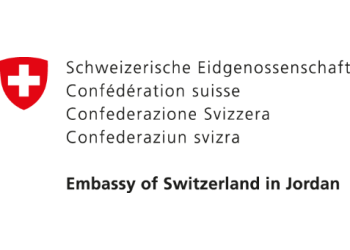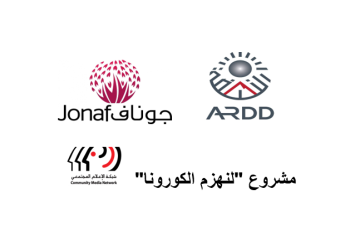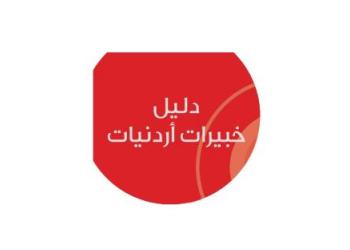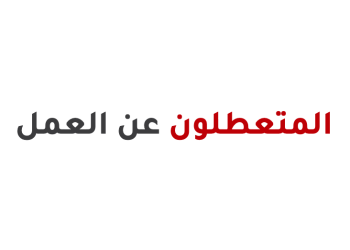Costly Dreams…
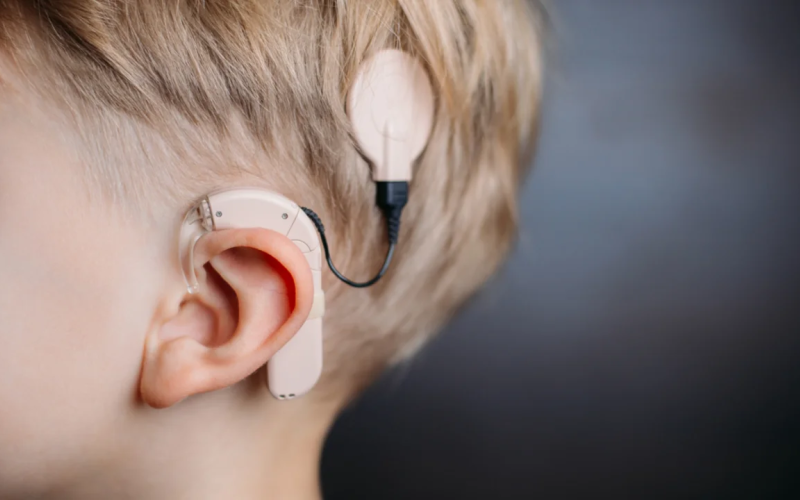
Saba Al Mansour and Mahmoud Al Shboul
This investigation sheds light on the absence of an effective infrastructure for the sustainability of cochlear implants provided to children by the Jordanian government, and the lack of market regulations pertaining to maintenance, spare parts and taxation, making the parents of these children feel “trapped” in an inevitable life-long financial commitment, to technological companies.
“We thought it was simply a cochlear implant and hearing aid and we’d be done,” says Rami Alqam, whose daughter Larees, eight years prior, underwent a cochlear implant provided by the country’s public health sector.
Her parents applied for the free procedure after noticing Larees had hearing difficulties.
Her father says: “We were not made aware, neither before the operation nor afterward, of the financial burden that would ensue.”
Pay Up or Face Deafness
Alqam states that children with cochlear implants receive no customs tax deductions on spare parts, bitterly adding: “Tech companies presented us with a fait accompli: You either pay up or face deafness.”
Larees’ external cochlear device malfunctioned only nine months after her procedure. Her father had to take out a bank loan of 6000 JOD ($8500), to pay for a new device after the donating governmental entities refused to cover the cost of the replacement and agreed to deduct 500 JOD ($700), from the price of the new device on the condition that Alqam returns the old device to them.
The father currently pays 500 JOD ($700), each month to cover the monthly loan installment, usage cost, rehabilitation sessions, and the cost of spare parts like the external cable that constantly needs replacing and the batteries which, according to Rami, are not provided by the donating entities as frequently as needed.
Video: Larees Alqam’s Father
“My name is Rami Alqam and my daughter underwent a cochlear implant. The real shock comes after the implant operation, not before. Before the procedure nobody tells you what is coming, the real nightmare. The cost of maintenance for the device is extremely high. We became a commodity in the hands of tech companies. The importing entity covered the procedure, and we thought with the implant and hearing aid we were done. The cost after that is an average of 300 JOD ($425) per month, to cover the needed rehabilitation sessions, cables and batteries. These are the most basic expenses that exclude maintenance and malfunction costs. These have led me to take out bank loans. My daughter needs an average of 500 JOD ($700) per month. The batteries, cable, minor malfunction repairs, and auditory-verbal therapy sessions all cost around 300 JOD ($425). I also pay 160-200 JOD as monthly repayments for the loan I took out to pay for the cochlear replacement. I had no other alternative. It was a difficult situation. The company presented us with a fait accompli: either you pay up or face deafness.”
|
Rami is still paying for the loan he took out seven years ago. He had no other choice to prevent his daughter’s hearing loss and enable her to enroll in school. Rami states: “If the device is working, the child can hear, but if it malfunctions, the child is completely deaf.” He adds bitterly: “unfortunately there is no insurance cover for such cases.”
Rami was not the only parent who was forced to take out a bank loan to pay for a replacement for the malfunctioning external cochlear device. Fadi Al Quraan also had to take out a loan to replace the two malfunctioning devices of his sons, Mohammad and Mahmoud. Al Quraan pays 280 JOD ($400) per month, to repay the 12000 JOD ($17000) he borrowed.
The twins, Mohammad and Mahmoud underwent the cochlear implant procedure when they were four years old. The operation was covered by the public health sector after tests showed that they both suffered from severe hearing loss.
Fadi, their father, received, for free, two battery boxes each month and one cable every three months for each child. This, however, according to Fadi, was not enough.
He managed to find donors to cover the cost of batteries, but still had to pay for the maintenance and spare parts of the external device which put a huge financial burden on his family.
Recently, Fadi was relieved of such financial burden after paying himself for new devices that did not require cables nor batteries. However, he still worries about the cost of future newer versions of the hearing aid.
Video: The father of Mohammad and Mahmoud Al Quraan
My name is Fadi Al Quraan, father of Mohammad and Mahmoud Al Quraan, both of whom underwent cochlear implants. We found out they needed the implants when they were two years old. In the beginning, specialists advised us to use hearing aids, but, unfortunately, after six months there was no improvement, so we had to do the cochlear implants. After the procedure, we had to deal with maintenance costs and auditory-verbal therapy. The monthly therapy cost for both boys is 150 JOD ($210). The maintenance cost is very high and for us, as parents, this was unaffordable. The cable is also expensive, costing 50 or 60 JOD. If the cable breaks, there is no hearing. I had to take out a bank loan to renew my boys’ devices. Each device cost 6000 JOD. The cost could be reduced with some tax deductions, especially that they are used by children. Some people cannot afford to fix malfunctioning devices, and the children simply stop using them until the parents can afford the cost of repair.
|
Regret and Suffering
“I did everything I could for my children, but I now regret the cochlear implants,” says Shaher Al Hulool without hesitation as he describes the ordeal his four children went through.
Shaher has three girls and a boy, all of whom underwent cochlear implants due to severe hearing loss.
Shaher complains about the continuous repair costs for the implants, be it for the batteries, cables, software updates or maintenance. The children are beneficiaries of a public health insurance that covers the cost of the implants. The insurance provides them with batteries but inconsistently, and Shaher says that they are of bad quality and become defective quickly.
A few years ago, Shaher and his wife had to take out a bank loan to cover the maintenance cost of the device of their eldest daughter, Aya.
Now, any maintenance for the device is not possible because its software needs to be updated first, which would cost 5000–7000 JOD, an amount Shaher cannot afford. Eighteen year old Aya is hence deprived of benefitting from her implanted cochlear according to her father.
The problem does not only lie in the lack of spare parts for the external cochlear device, but extends to the unavailability of auditory-verbal therapy services in the governorate of Tafilah where Shaher and his family reside. The family, therefore, decided to move to another governorate, Madaba, hoping to find better auditory-verbal therapy services for the children. Unfortunately, the situation in Madaba was not much better, as these were all paid services provided by institutions in the private health sector and quite unaffordable for a retiree whose salary did not exceed 200 JOD.
Shaher states that the cost for a one hour therapy session is around 25 JOD per child, which means that his whole salary would not even cover the cost for rehabilitation. Eventually, Shaher was forced to enroll his children in a school for the deaf and mute where they would learn sign language.
The Absence of Adequate Infrastructure
Three entities are responsible for cochlear implants in Jordan: the Prince Hamzah Governmental Hospital, King Abdullah University Hospital, and the Royal Medical Services. Cochlear implants in the country began between 2007 and 2010, after which a specialized unit for cochlear implants was established in each of these institutions.
Between 2007 and 2014, the Ministry of Health covered the cost of 520 cochlear implants, after which all costs were covered by a medical exemption from the Royal Court.
In 2014, the initiative “Hearing Without Borders” was launched by the Crown Prince Foundation in partnership with the Royal Medical Services (the military health sector) and the Ministry of Health.
The initiative prepares a list of patients eligible for the implant procedure according to medical priorities and needs, then determines the medical institutions that are to carry out these implant operations, like the Royal Medical Services, The Prince Hamzah Governmental Hospital, or the King Abdullah University Hospital.
According to “Hearing Without Borders” website, partnering entities provide the cochlear devices, pre-op medical tests, and post-op follow ups, and program the external cochlear device. This is in addition to providing the children with auditory-verbal therapy sessions, and device batteries and cables.
The initiative’s pamphlets also indicate that batteries and cables are the spare parts covered by them. Whereas, cables are provided as needed and batteries are provided once every six months.
The military health sector covers the cost of batteries and cables for individuals insured by that sector. The initiative, “Hearing Without Borders” covers these costs for non-military individuals. Batteries may also be provided for individuals who underwent the implant procedure independently. These operations target children under the age of six, who suffer from severe hearing loss in both ears. However, many entities responsible for performing the procedures lack adequate infrastructure that could sustain the services provided for these children without the need to deal with the manufacturing tech companies.
The pre-op tests in the governmental and university hospitals are limited to x-rays and lab tests, while the manufacturing tech companies alone have the facilities to carry out the needed specialized pre-op tests and the necessary post-op tests to evaluate the effectiveness of the implanted cochlear. Neither the governmental hospital nor the university hospital provide spare parts or device update services, while the Royal Medical Services did not provide any details in this regard even after our investigative team sent them an inquiry.
Auditory-verbal therapy sessions that are necessary to help children benefit from the cochlear implants are also quite scarce. King Abdullah University Hospital provides speech therapy sessions through the Audiology and Speech Pathology Department in the Jordan University of Science and Technology (JUST). These services are not available during university holidays and exam periods which amount to 158 days each year. On the other hand, therapy services in Prince Hamzah Governmental Hospital are provided by two technicians who are also responsible for carrying out tests in the audiology clinic for patients of the Ear, Nose and Throat Unit.
All cochlear implant patients need a sustainable supply of cables and batteries in order to ensure the effective operation of their devices.
Experts in the World Health Organization say that cochlear implant operations should be carried out in environments with supportive services and an adequate rehabilitative infrastructure.
Taxation Without Regulation
The Jordan Customs Department states that spare parts for the external cochlear device are subject to a 16% tax, while the tax imposed on the internal cochlear device provided by the donating governmental entities is only 4%.
The cost of cochlear implants are not subject to any regulation by the concerned authorities. For example, in the case of heart stent devices and procedures, Jordan’s Food and Drug Administration determines the importer’s profit rate according to a set of standards and principles.
According to Jordan’s Food and Drug Administration Law no. (41) for the year 2008, the Administration is the entity responsible for issuing licenses for medical supplies in the market, in addition to regulating the use of these supplies and devices.
In response to an inquiry sent by the investigative team, the Administration admitted to the absence of a system that regulates the prices of cochlear implant devices and stated that it was in the process of establishing one.
Ear, Nose, and Throat (ENT) specialist Dr. Firas Al Zo’bi states that children hold an everlasting relationship with their cochlear devices, hence it is important to ensure their sustainability through regular maintenance, software updates, and part replacements.
Graph 1:
Graph of the External Cochlear Device Price range: 2500-6000 JOD
Parts (Clockwise from top center):
Magnet with Coil Price range: 230-290 JOD
Sound Processing Unit (Microphone) Price range: 220-750 JOD
Batteries Compartment Price range: 190-250 JOD
Cable Price range: 50-300 JOD
|
A Bitter Experience
Dr. Al Zo’bi tells the story of the bitter experiences of children who received a French-made cochlear implant provided as part of a procurement program led by the Ministry of Health over a decade ago.
The specialized ministerial committee awarded the tender to a company with limited experience in the Jordanian market. The company was an agent of a French-made model of the cochlear implants and had submitted the lowest bid that met the tender’s criteria. Tens of children subsequently underwent cochlear implant procedures using that brand, according to Al Zo’bi, who also states that the company did not continue to offer software updates and maintenance services for the implanted devices.
He adds that problems appeared after the decline of the after sale services quality, and the rise in the number of complaints. Dr. Al Zo’bi, who was a member of the tender committee back then, says: “The parents were in dire straits because the agent was not providing adequate follow up services, and the Ministry failed to force the agent to continue providing these services in the Jordanian market.”
Matters became more complicated after the European company was sold to another. Dr. Al Zo’bi says that the children’s parents turned to the brand’s agents in neighboring countries for the much needed spare parts and maintenance services. Representatives of these agents would visit the Kingdom periodically to examine the devices or sell external parts.
He adds: “This meant that children often had to wait for months and remained without access to hearing or rehabilitation until their devices could be fixed.”
Medical anthropologist, Michele Friedner, from the University of Chicago, states that the recurring malfunction in these devices could shock the brains of these children. She warns of the adverse effects of linguistic communication deprivation when these children do not learn sign language and hence lose their ability to communicate with the world around them and become independent and able to look after themselves.
Graph 2:
Eligibility for receiving a cochlear implant:
1- Children with severe sensorineural hearing loss in both ears. 2- Children should be between 1-6 years of age. Older children should have already acquired the language. 3- Cochlear implants directly stimulate the auditory nerve.
|
Waleed’s Story
“Your son cannot hear sounds,” were the words uttered by the doctor who examined Waleed, a year and a half after he underwent a cochlear implant procedure in Prince Hamzah Governmental Hospital nine years ago.
Waleed was born with severe hearing loss which made him eligible for the cochlear implants granted by the Jordanian Ministry of Health.
The doctor’s words changed the life of the seven year old child. When his father went to see the doctor who had performed his son’s implant procedure, the doctor told him, “What do you want me to do? Your son is lucky to have been given a cochlear implant in the first place!”
Dr. Friedner says that surgeons and implant donating entities do not consider what happens with these children after their operations. This is apparent in a statement given by a former director of Prince Hamzah Hospital, the only governmental hospital that carries out these procedures in the public sector, in his reply to a complaint made by parents regarding the recurring malfunction in the cables attached to the cochlear external device, saying that the hospital was responsible for the medical aspect of the implant procedure and had nothing to do with the device’s cables.
Waleed is now 16 years old. He can neither hear nor speak. He has not been able to continue attending school since he has no access to rehabilitation and therapy sessions due to his family’s financial limitations.
Video: Waleed’s Story
He had the implant at 6 years of age. I began taking him to a speech therapist. Each 40 minute session cost 10 JOD. He took 3 classes per week. Waleed would only make noises to draw people’s attention. So, I took him to get an audiogram and the doctor said: “Your son does not hear sounds. What he hears is a humming noise. He cannot hear the sounds you and I make. You need to see the doctor who performed the implant operation.” When I went to see the surgeon his reply was: “What do you want me to do? Your son was lucky to have had the implant in the first place.” We then contacted the company’s agent several times until the device simply stopped working for about 9 months. We contacted the company again only to find out that it was no longer operating. We asked where we can fix the device since the company seized to exist, and after two months of suffering we were referred to a place that had no software support services. They might provide you with a cable or a magnet, but they had no maintenance services whatsoever and I am unable to program the device myself. My son is the most precious thing on earth to me. I just wish one day to hear him call me “Dad.”
|
A Lifelong Commitment
Anthropologist Friedner indicates that the cochlear implants are promoted as the best option available to deal with hearing loss, while families of the recipient children find themselves in an unavoidable lifelong financial commitment to the manufacturing tech companies.
Friedner’s research focuses on areas in Asia and in particular, India, where the government has also adopted a program for cochlear implants in underprivileged children.
Friedner noticed that government officials, cochlear manufacturing tech companies, surgeons and health specialists all focus on what they perceive as “the child’s right to hear” without much consideration for measures needed after the operation, especially those pertaining to continued maintenance and infrastructure, as if implants were a “one-time permanent fix” for hearing loss.
Citing one of the families included in her research project, the anthropologist believes that parents feel “trapped” in a no-divorce, marriage-like lifelong commitment with manufacturing tech companies.
According to a data analysis carried out by ARIJ network for another report on children with cochlear implants in Jordan, most families replace the parts of the external cochlear device at their own expense, as shown in a survey of over two hundred children who underwent implant procedures in public hospitals. The report also indicated that around two thirds of those children needed to replace the external cochlear device.
Video: Interview with Dr. Firas Al Zo’bi and Dr. Michele Friedner
Dr. Al Zo’bi:
If the auditory nerve is not stimulated for a certain period of time, it becomes unable to transfer sound to the brain, and the area in the brain responsible for hearing begins to shrink. Hence, the continuous stimulation of the area is very important especially that we hear with our brains not our ears. The ear only gathers sound and transfers it to the brain. The brain analyzes sound and comprehends it. Children need to replace the external cochlear device every 5-7 years, due to several factors like humidity, usage and friction with a child’s constant movement. The relationship between these children and their cochlear implants is everlasting. As long as they are alive, they will need the implant, and the devices and all their parts need to keep functioning in order to remain of benefit to the children.
Dr. Michele Friedner’s interview is in English and requires no translation
|
Trying to Break Free
The high cost of maintenance and the device’s pricey spare parts drove Sultan Ammari to offer free maintenance services to some types of battery compartments that have a retail price ranging between 230-250 JOD per piece. Ammari knows, first hand, the financial burden caused by the high cost of spare parts, as his dilemma began ten years ago when his own daughter underwent a cochlear implant procedure.
Ammari founded an initiative whose members included a large number of recipient children’s families. He states: “I have no personal motive. My goal is to try and help people as much as I can by reducing the financial burden on these families,” emphasizing that his services are free of charge.
He has used simple tools to repair the battery compartments for 30 children who were deprived of the ability to hear because of a malfunction in these parts. To combat the high cost of replacements, Ammari uploads instructional videos on how these battery compartments can be fixed instead of paying a lot of money for their replacements.
These are all modest attempts to ease the suffering of parents whose children receive donated cochlear implants only to find themselves trapped in an endless cycle of spare part purchases, maintenance, software updates and auditory-verbal therapy sessions.
Fadi Al Quraan, whose two sons received cochlear implants, says: “Some people are forced to keep their children’s devices on a shelf until they can afford to fix them.”
A New Market in Developing Countries
Around 5% of the world’s population needs rehabilitation services for hearing loss. That’s 432 million adults and 34 million children. More than 80% of those live in developing countries.
The number of cochlear devices implanted in 2022 reached 1 million, and a single global tech company controls the production of 65% of these devices. Other companies do not reveal their share in this market and many auditory tech companies do not publish their profits in their annual reports.
The global market size for cochlear implants is estimated at 1.6 billion USD. Unilateral cochlear implants (or single ear implants) make up 88% of the market, which is expected to double in size during the next seven years, reaching 3.1 billion USD, according to a report published by the Grandview Research Company.
According to their report, Europe raked in the biggest share of revenues last year, due to several factors such as the rise in awareness regarding hearing aids and the proliferation of speech rehabilitation centers. Governmental programs that grant free hearing aids to the underprivileged are expected to feed the markets in the Asia-Pacific region. For example, India has a program for the “Empowerment of Persons with Disabilities through Access to Assistive Technology,” and carries out 500 cochlear implants each year.
According to another ARIJ report published previously on the same subject, the Jordanian Ministry of Health had issued a decision to repair malfunctions in the external parts of the implants. But that decision it seems has covered so far only a few tens of cases while the decision to replace defective devices benefited less than a few.
Waleed was not among those who benefitted from the ministry’s decision. He spent years deprived of the ability to hear and communicate with the world around him, living a bitter experience with a useless device attached to his head and a father whose greatest wish was to hear his son call him “Dad.”
We requested an interview with the Minister of Health to discuss the findings of this investigation. We have also sent a request to the Health Insurance Administration regarding the number of cases covered by the Ministry’s decision to repair or replace defective external cochlear devices. No response has been received until the publication of this report.







